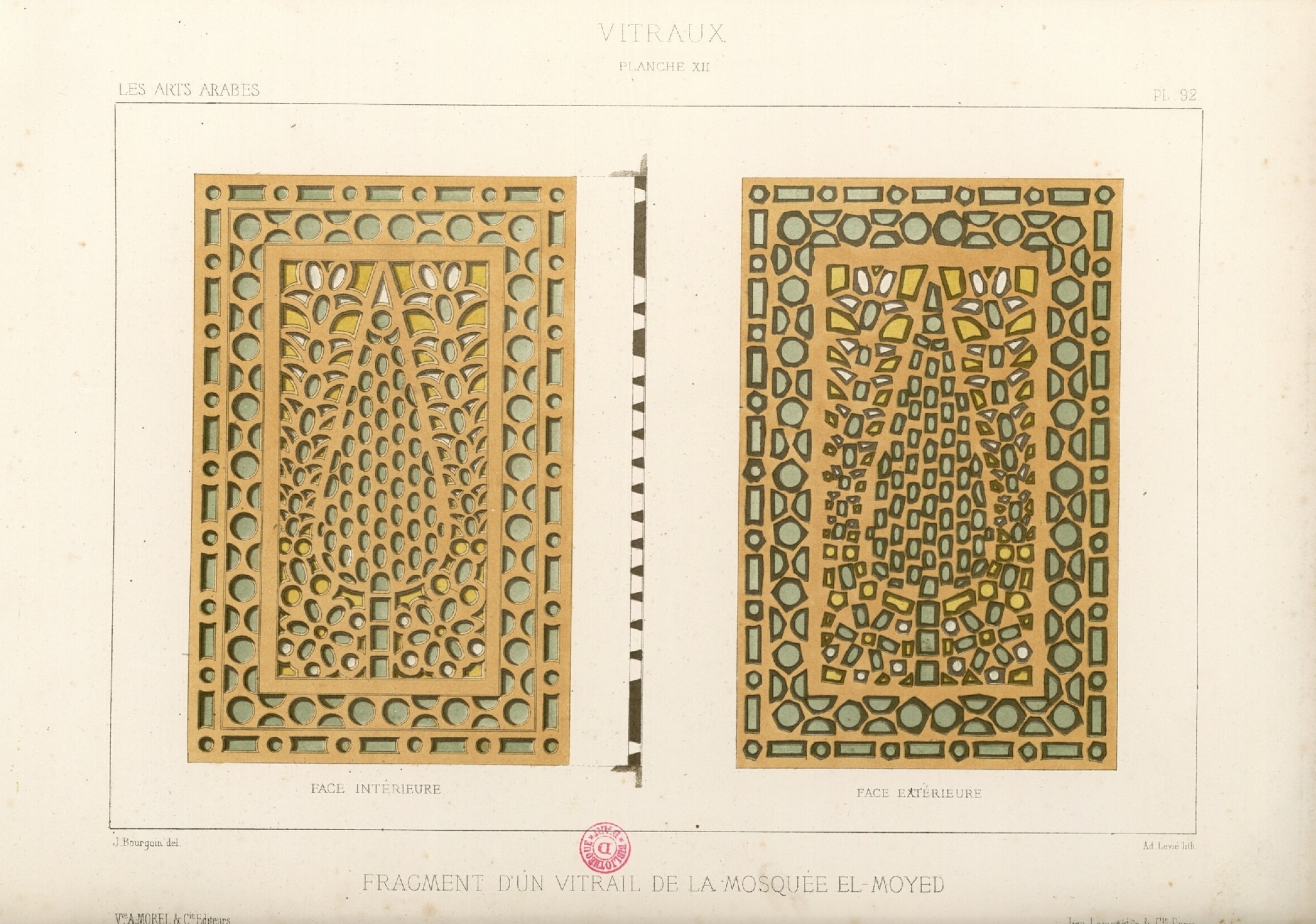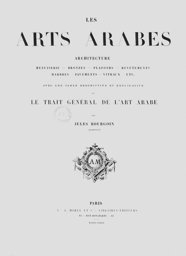Recherche
During his stay in Egypt in 1863–1866, the French architect Jules Bourgoin (1838–1908) made numerous drawings of architectural details, among them several stucco and glass windows. Based on this documentation, he published Les Arts arabes between 1868 and 1873.
As he states, the plate shows a fragment of a stucco and glass window from the Mosque of al-Muʾayyad. One of his drawings shows the same window (Bibliothèque de l'Institut national d'histoire de l'art, Paris, Archives 067, 10, 06_feuillet11verso). When he was in Cairo, this mosque was already in a ruinous state, as is later reported by the Comité de Conservation des Monuments de l’Art Arabe (Barois/Grand/Sedak/Herz, 1890, p. 74). The stucco and glass window depicted by Bourgoin was possibly no longer in situ. This would explain how Bourgoin was able to make his study of the back and draw the section. With these different views, the technical aspects of stucco and glass windows were illustrated for the first time.
In the textual part, Bourgoin (1873, p. 4) only briefly comments on the technique of the windows, mentioning their oblique carving and praising their beautiful effect.
While the window depicted by Bourgoin is lost, there are to this day, in the mausoleum of the mosque, two windows, each with four rectangular panels and two lunette panels. The mausoleum had not fallen into ruins, and was still standing in 1890, when the Comité de Conservation des Monuments de l’Art Arabe inspected it (Barois/Grand/Sedak/Herz, 1890, p. 74). The four lower panels of the windows depict cypresses flanked by tendrils. Flood argued that they, or their design, date to the years of the completion of the mosque in 826 AH /1422 CE. His argument is based on the knot ornament in the trunk of the cypresses, which appears in an Iranian manuscript dated 849–50 AH /1445–46 CE (Flood, 1993, p. 142, ill. 93). The Comité de Conservation also lists a sum for the ‘réparation et réfection des vitraux’ in 1890 (Barois/Grand/Sedak/Herz, 1890, p. 76).
The knot ornament does not appear on Bourgoin’s illustration, but the extant windows do give an idea of how Bourgoin’s panel may have been part of a larger window. More surprising are the colours given by the French architect for his window; the complete lack of red tones is very unusual. The colours are already identified in Bourgoin’s drawing, and they correspond to those of the printed lithograph. However, the windows in the Mausoleum of al-Muʾayyad do include many pieces of red and orange glass.
Datation
1873
Période
1863 – 1873
Sites liées

